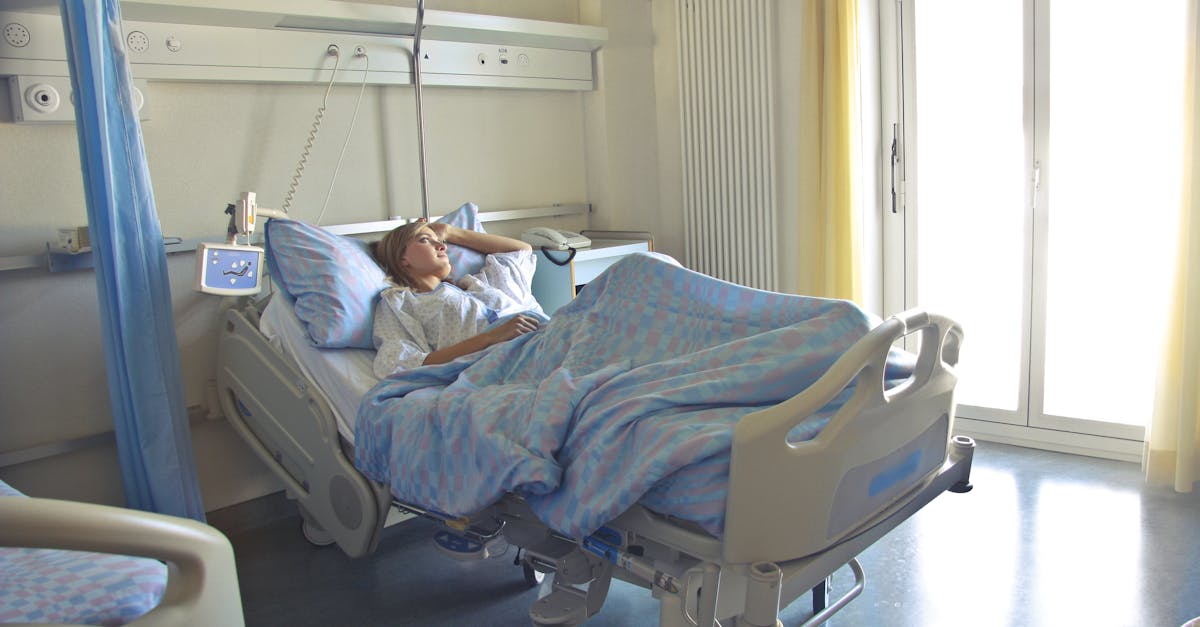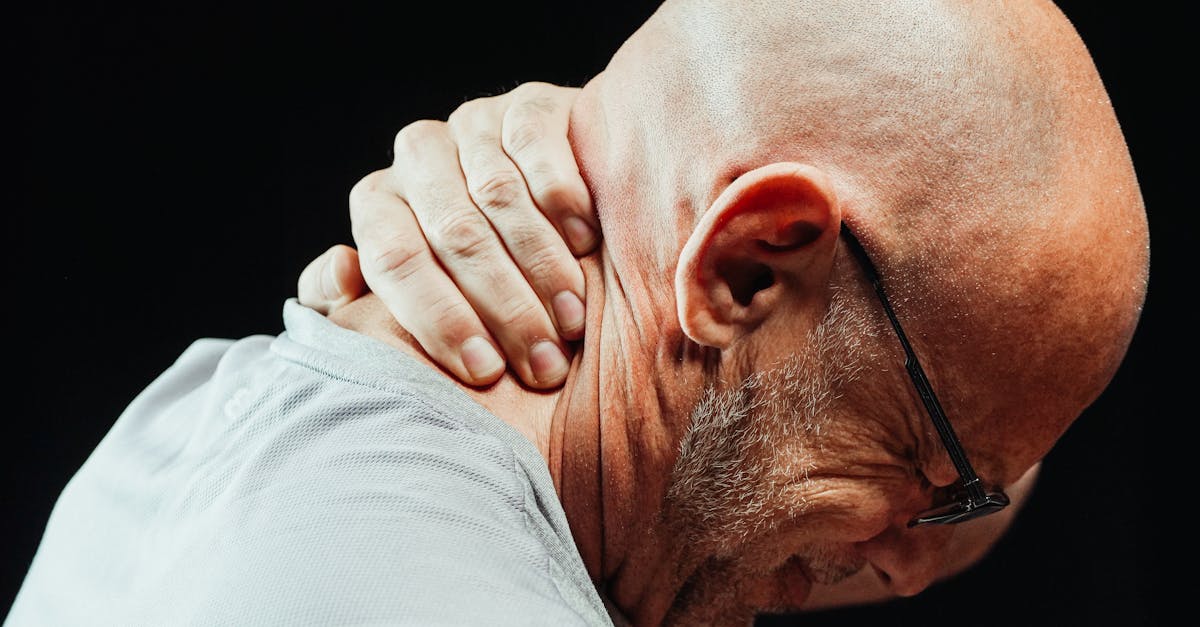In Short: Tendonitis often causes persistent pain and discomfort. To regain balance during your recovery, it’s essential to adopt gentle techniques and shoulder pain relief exercises. Pulse Align Clinics offer an innovative and accessible approach to postural recalibration, aimed at improving your comfort and mobility. Rediscover your health and well-being at Pulse Align. Book your appointment today! Are you struggling with neck pain and poor posture? Finding balance during tendonitis recovery is essential for anyone suffering from shoulder pain or other body ailments. In fact, many people experience pain related to tendinitis, particularly following a rotator cuff injury or frozen shoulder. Pulse Align’s balanced approach is part of a process aimed at improving posture correction and effectively alleviating symptoms. Through specific exercises to relieve shoulder pain and strengthen the core, Pulse Align helps patients regain their well-being and correct the underlying causes of their discomfort. Discover practical tips and effective methods to accelerate your tendonitis recovery. Learn tailored exercises, pain relief techniques, and recommendations for regaining optimal mobility. In our daily lives, recovering from bodily imbalances, such as those caused by tendonitis, is essential. Posture plays a crucial role in our well-being. This is where Pulse Align’s balanced approach comes in, using gentle stimulation methods to promote neuromuscular rebalancing and improve muscle symmetry.Pulse Align adopts a holistic approach that addresses pain and tension resulting from postural misalignments. By focusing on natural recovery, this method aims to restore balance while giving clients the ability to move with ease. Through gentle and innovative techniques, each client can move closer to optimal health. Pulse Align clients have shared their positive testimonials. They have experienced significant improvements, such as a natural improvement in posture and a reduction in discomfort related to tendonitis through regular practice. For example, one client noted, “After a few sessions, I felt a remarkable change in my posture. My body finally feels balanced again.” We invite you to explore what Pulse Align can offer to optimize your journey to wellness. Whether you’re in Montreal, La Prairie, Terrebonne, Chicoutimi, Charlesbourg, Saint-Jérôme, Châteauguay, Sainte-Marie, Les Escoumins, Granby, or Panama City, find a Pulse Align clinic near you and book your consultation today. Our approach complements your medical care, resulting in lasting improvements in overall well-being. https://www.youtube.com/watch?v=cBJR0fZMriIPosture Correction
: Improve your body alignment to reduce pressure on the shoulders.
Gentle Techniques : Use non-invasive methods to promote natural healing. Targeted Exercises : Incorporate specific workouts to relieve shoulder pain. Core Strengthening: Practice strengthening exercises to support shoulder function. Neuromuscular Recalibration : Help restore natural movement patterns for better function. Personalized Plan: Take an individualized approach to target your unique needs. Community Support: Benefit from a supportive environment to enhance your health journey. Discover our complete guide to tendonitis recovery. Learn effective techniques, rehabilitation exercises, and tips to relieve pain and prevent recurrence. Regain your mobility and improve your quality of life with our expert tips. Recovering from tendonitis, whether related to a frozen shoulder or a rotator cuff injury, requires careful attention to neuromuscular health and improving posture. Pulse Align’s balanced approach is part of a holistic rebalancing process that aims to relieve pain while restoring muscle function. In this article, we will explore effective methods for finding this balance during the recovery phase.

Posture correction is crucial for reducing the causes of shoulder pain and improving mobility. Poor posture can aggravate conditions such as shoulder strain and bursitis. By incorporating targeted exercises, such as core exercises, you can not only improve your posture but also reduce tension in the shoulder muscles. This contributes to better circulation and reduced inflammation, which is essential for effective recovery. Targeted Pain Relief Exercises It is essential to incorporate shoulder pain relief exercises during your rehabilitation. Techniques such as isometric shoulder exercises are ideal for strengthening muscles without causing pain. Additionally, gentle stretches can improve flexibility and reduce stiffness associated with tendonitis. For example, you can try the “Dead Bug,” which helps protect the shoulder joint while working on coordination and core strength. Natural Balance and Symmetry Striving for natural balance and muscular symmetry is essential to avoid brachial plexus injuries and other shoulder problems. Pulse Align uses gentle techniques that promote the body’s innate ability to recover. By focusing on neuromuscular recalibration, you promote better body function and reduced nighttime shoulder pain. Consider adopting sleep practices that incorporate sleep positions with supportive pillows to prevent shoulder pain at night.Practical Tips for Daily Recovery To incorporate these recommendations into your daily routine, consider breaking up your exercises into short sessions throughout the day. For example, taking regular breaks to perform core exercises or stretches can significantly improve your posture and reduce pain. Combining these with natural remedies for bursitis, such as heat applications and gentle yoga techniques, can also be beneficial. Take action to improve your well-beingIf you’re ready to explore more deeply how Pulse Align can support you on your journey to optimal well-being, we encourage you to schedule an appointment with our specialists. Together, we will develop a personalized exercise plan that directly addresses your needs, whether it’s relieving pain related to sports or your daily activities. For additional information and to discover our other services, visit our website and find a Pulse Align clinic near you, whether in Montreal, La Prairie, or or in other locations. Together, let’s take steps to improve your health and quality of life! Aspect of the Approach Description Natural Balance Promotes bodily harmony and self-regulation.Gentle Techniques
Uses non-invasive methods to stimulate healing. Postural AwarenessPromotes better posture to reduce tension.Targeted Exercises Integrates movements designed for pain relief.
Neuromuscular Recalibration Helps restore natural movement patterns. Client-Centered Approach Adapts techniques based on specific needs. Community Environment
Encourages mutual support and shared experiences. Mindful MovementPromotes mindfulness for a better body connection. Strengthening Body Functions Helps improve strength and stability.
- Connects physical, emotional, and mental health. Discover the best strategies for recovering quickly from tendonitis. Learn exercises, treatments, and pain management tips to promote effective healing and return to daily activities pain-free. Finding Balance During Recovery: Client Testimonials on Pulse Align’s Balanced Approach
- In the city of La Prairie, many clients have expressed their satisfaction with Pulse Align’s gentle and balanced approach. They attest that the innovative techniques truly supported their body’s natural ability to recalibrate and restore balance. One client shared, “After a few sessions, I already felt noticeable changes in my body. It was as if Pulse Align had awakened something within me; I feel aligned again, ready to move forward.” In Mount Royal, the testimonials are similar. One client explained, “My healing journey took a positive turn thanks to Pulse Align. They were able to tailor their approach to my specific needs and help me regain my overall well-being. I never thought I could feel such a significant improvement in my mobility so quickly.” These experiences demonstrate the holistic impact Pulse Align offers through its treatments.
- For those in Terrebonne, the feedback is equally positive. One client mentioned, “I suffered from tendonitis and had difficulty performing my daily activities. Thanks to Pulse Align, I learned to listen to my body and support it in its natural healing process. I am now able to enjoy my hobbies without pain.” This perspective on health and wellness clearly resonated with many residents. In Chicoutimi, another client shared her experience: “I was skeptical at first, but after experiencing Pulse Align’s care, I can say there is real support for recovery and balance. The community is also incredible; I felt supported throughout my journey.” This underscores the importance of a client-centered approach, where collective well-being is valued. Clients in Charlesbourg and Châteauguay also find value in Pulse Align’s services. “Having a team that truly cares about your well-being has made all the difference,” said one client. “I feel much stronger and more balanced since starting my treatments.” This holistic approach helps clients reconnect with their bodies and navigate a stress-free life.
- Finally, Pulse Align works closely with healthcare teams to support clients and their families on their wellness journey. If you are located in Sainte-Marie or Saint-Jérôme, feel free to explore the benefits Pulse Align can offer you. To find a clinic near you, visit our
- Our Clinics section and begin your own path to better health.
- Pulse Align clinics are dedicated to improving their patients’ quality of life through innovative and integrative health solutions. By combining cutting-edge technologies with personalized therapies, these clinics focus on addressing the root causes of various musculoskeletal problems, chronic pain, and other health concerns. Patients can expect a welcoming environment, knowledgeable guidance, and a comprehensive plan tailored to their unique needs, all designed to promote long-term well-being and a more active lifestyle. Our Mission
- At Pulse Align, our mission is to deliver evidence-based, client-centered treatments that address the underlying causes of pain and dysfunction. By integrating advanced techniques and technologies, we strive to empower each person to take control of their health, ensuring a high level of care, lasting relief, and an improved quality of life. Learn more about our approach and available services at

and find a location near you here: https://pulsealign.com/our-locations/. Discover how TAGMED Spinal Decompression Technology Improves Chronic Pain Conditions TAGMED offers a non-surgical solution specifically designed to treat moderate to severe disc problems, such as a herniated disc or bulging disc. Through spinal decompression therapy This specialized technique helps gently reduce pressure on discs and nerves, promoting mobility, alleviating pain, and supporting your body’s natural healing process. If you’ve reached a plateau with other therapies, discover how TAGMED’s evidence-based approach can help you return to an active and comfortable life.Have you tried conventional treatments and continue to struggle with persistent back pain due to a severe disc condition? Mechanism of Action TAGMED’s neurovertebral decompressionapplies controlled and progressive traction to the spine. This process increases the space between the vertebrae, reducing pressure on the intervertebral discs and nerve roots. By promoting better fluid circulation in the targeted area, this technique helps reduce inflammation and relieve pain, providing a reliable non-invasive solution for people with chronic back problems. Specific Benefits This non-invasive approach can effectively alleviate chronic pain and symptoms related to conditions such as a herniated disc or spinal stenosis. By reducing pressure on nerve structures and optimizing fluid circulation around the discs, TAGMED can accelerate the healing process and improve the quality of life of a wide variety of patients seeking relief from persistent discomfort. Comparison with Other Treatments
Compared to commonly used treatments such as pain medications, corticosteroid injections, surgery, or traditional physical therapy, TAGMED’s spinal decompression technology offers distinct advantages. It does not require invasive procedures, minimizes medication-related risks, and offers a potentially faster path to recovery. These attributes make this method an attractive option for those seeking safer, evidence-based alternatives.
Patient Testimonials Many patients have benefited from TAGMED spinal decompression for chronic pain and associated symptoms. For example, one patient shared that thanks to this therapy, he experienced lasting pain relief and regained daily activity he thought was lost forever. These testimonials illustrate not only significant improvements in their quality of life but also a reduced need for medication. This demonstrates the tangible results as well as the practical benefits of this therapeutic approach. Conclusion: Finding Balance During Tendonitis Recovery with Pulse Align If you’re looking for a natural and holistic approach to improve your well-being, Pulse Align may be the solution you’ve been waiting for. By promoting posture correction and neuromuscular recalibration, Pulse Align significantly improves your posture, reduces discomfort, and increases your mobility. Customers have expressed positive experiences, reporting a genuine sense of well-being and an improved quality of life. Their feedback highlights how Pulse Align’s gentle, non-invasive methods support your body’s natural ability to heal itself. Through individualized attention to each individual, Pulse Align provides an environment conducive to holistic health, allowing everyone to reconnect with their body and regain balance. We encourage you to discover the Pulse Align difference today. Take the first step toward a healthier, more balanced you by visiting our website to learn more and booking your consultation at one of our clinics. Together, let’s work to restore your well-being and daily comfort. Do you suffer from a chronic condition that responds little or not at all to conservative treatments? Pulse Align is an innovative, non-invasive method that uses gentle, imperceptible impulses to restore the body’s natural balance and posture. This unique approach promotes the reduction of muscle and joint tension, helping to address balance issues during tendonitis recovery. By incorporating advanced techniques, Pulse Align supports the body’s natural rebalancing process, allowing clients to feel more comfortable and in harmony with their movement. It’s important to note that Pulse Align doesn’t focus on specific pain or conditions. Instead, our goal is to help the body recalibrate naturally, often resulting in remarkable improvements in comfort and posture. Clients frequently find that this process helps them feel more balanced and revitalized, allowing them to fully embrace each moment of their daily lives. At Pulse Align, we take a personalized approach that considers each client’s unique needs. Many testimonials attest to notable improvements in muscle tension, general discomfort, and an enhanced sense of well-being. For example, one client shared that their sessions significantly alleviated tension, allowing them to regain a fluidity in their movements they thought they had lost. This illustrates how a gentle and respectful approach to the body’s natural state can lead to impressive results. To learn more about the services offered by Pulse Align, we invite you to visit our website where you’ll find useful information and can discover our clinics located in La Prairie, Mont-Royal, Terrebonne, and other regions. Book an online consultation now for yourself or your family, keeping in mind that our services complement, but do not replace, healthcare. Together, we’ll explore how Pulse Align can help improve your overall well-being. To learn more about our services and book an appointment, visit our website: Pulse Align.


Frequently Asked Questions
Shoulder Pain
Is overtraining a frequent cause?
Yes, excessive training without proper rest can cause micro-tears and shoulder pain.
How do I know if my shoulder pain is serious?
If the pain lasts several weeks, severely limits movement, or is accompanied by swelling, redness, or deformity, seek medical attention.
Can I use resistance bands to relieve shoulder pain?
Yes, resistance bands allow progressive strengthening of shoulder muscles, but do it without pain.
What is the rotator cuff?
It’s a group of four tendons stabilizing the shoulder joint and contributing to arm movements.
Is complete rest recommended?
Not necessarily. Complete immobilization can stiffen the joint. Gentle, controlled movement is often beneficial.
Is mild morning shoulder stiffness normal?
A slight stiffness can be normal, but if it lasts long or is painful, seek medical advice.
What is shoulder osteoarthritis?
Shoulder osteoarthritis is the progressive wear of joint cartilage, causing pain, stiffness, and reduced mobility.
Is rest necessary to relieve shoulder pain?
Relative rest is often recommended, avoiding painful movements but not immobilizing the joint entirely.
Can repetitive motions at work cause shoulder pain?
Absolutely. Repetitive overhead movements increase the risk of tendinitis and bursitis.
Should athletes strengthen their rotator cuff?
Yes, specific exercises to strengthen the rotator cuff are often recommended for athletes.




